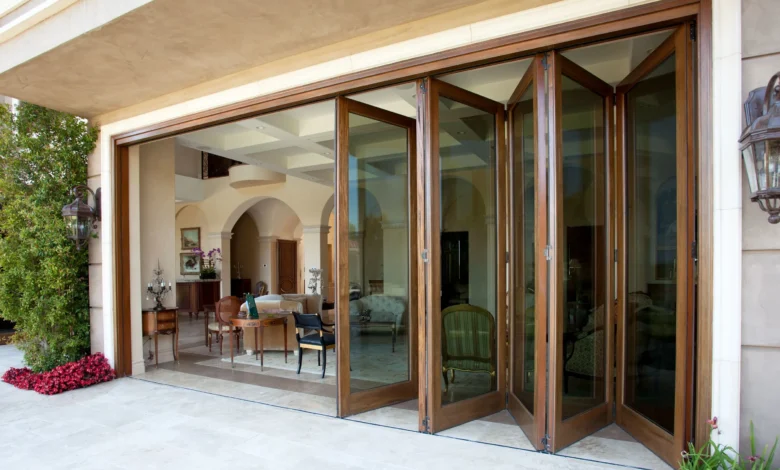Bifold Door Sizes Explained: Expert Tips for Perfect Installation

If you’ve ever considered updating your living space with something sleek, modern, and practical, you’ve likely come across bifold doors. But here’s the catch: no two homes or projects are the same, and that’s where bifold door sizes become a crucial piece of the puzzle. Think of this as a friendly Q&A call with an expert—by the end, you’ll know exactly what sizes exist, how to choose the right one, and why it matters for both function and style.
Table of contents
- What are bifold door sizes and why do they matter?
- What are the standard bifold door sizes?
- How do bifold door sizes affect design and function?
- Why is size more important today than it was before?
- Can bifold door sizes be customized?
- What should you consider when choosing bifold door sizes?
- Are there building regulations tied to bifold door sizes?
- Quick Market Snapshot: How popular are bifold doors today?
- Conclusion
- FAQs
What are bifold door sizes and why do they matter?
Bifold doors are folding panels that slide and stack neatly to one side, opening up wide access to spaces like patios, closets, or even offices. Their size determines not just how much light enters your room but also how practical they are for daily use.
Imagine trying to install doors that are too large for your wall opening—they won’t function smoothly. On the other hand, doors that are too small leave awkward gaps. That’s why understanding bifold door sizes is less about technical jargon and more about ensuring your space feels seamless, stylish, and livable.
What are the standard bifold door sizes?
Good question because most manufacturers work within some common measurements. In the United States, the standard bifold door sizes usually range from:
- Widths: 24, 30, 32, and 36 inches (per panel)
- Heights: 80 inches (standard door height), but also available in 96 inches for taller ceilings
- Total Openings: Typically, bifold doors cover 48–72 inches wide, using two or four panels
In the UK and Europe, sizes tend to be slightly different, with common widths starting from 450mm (about 17.7 inches) up to 900mm (35.4 inches) per panel, and standard heights of 1981mm (78 inches) or 2040mm (80 inches).
So, while there’s a baseline, bifold doors can also be customized, especially if you’re working on a modern renovation where walls and ceilings vary.
How do bifold door sizes affect design and function?
Think of size as the driver of three things:
- Light and View – Larger bifold door sizes mean more glass and more sunlight. A four-panel system across a living room wall can transform a dark space into a light-filled, open plan design.
- Accessibility – If you choose smaller doors, the opening feels limited. A wider set allows people, furniture, and even wheelchairs to move in and out effortlessly.
- Energy Efficiency – Bigger isn’t always better. Oversized glass panels may lose more heat in the winter unless you invest in energy-rated glazing. According to the U.S. Department of Energy, poorly insulated windows and doors can account for 25–30% of residential heating and cooling energy use. That makes choosing the right size and the right glazing an economic decision, not just an aesthetic one.
Why is size more important today than it was before?
The way we use our homes has changed dramatically. Open-plan living, outdoor-indoor flow, and multi-use spaces are now the gold standard. A decade ago, bifold doors were considered a luxury. Today, they’re almost a necessity in new builds and renovations.
Data from Grand View Research shows the global doors market was valued at $137.6 billion in 2022, with folding and sliding doors seeing some of the fastest growth thanks to lifestyle shifts. More homeowners want flexible partitions that can expand or contract depending on how the room is used.
That’s why bifold door sizes play such a critical role they dictate whether your investment feels modern, flexible, and future-proof.
Can bifold door sizes be customized?
Yes, and in many cases, customization is the smartest move. While stock bifold doors work for closets and laundry rooms, when it comes to patios or offices, homeowners often request tailored sizes.
For example, a case study by a London-based architectural firm showed that customizing bifold doors for a Victorian townhouse allowed them to preserve the historic structure while opening up the rear of the house to the garden. Instead of forcing standard sizes into a non-standard space, they commissioned bespoke panels resulting in a 40% increase in natural light and higher resale value.
What should you consider when choosing bifold door sizes?
When clients call me, these are the key questions I ask them to think about:
- Wall Opening Size – Measure twice, order once. The frame and track system also take up space.
- Panel Width – Panels too wide are heavy and harder to fold. Panels too narrow may look busy.
- Ceiling Height – Don’t forget that taller bifold door sizes may need structural reinforcement.
- Intended Use – Closet bifolds don’t need the same durability as patio bifolds.
- Budget – Larger customized doors can cost significantly more than off-the-shelf options.
Are there building regulations tied to bifold door sizes?
Yes. In both the U.S. and UK, building codes impact how bifold doors are sized and installed. For instance:
- Fire Safety: Certain rooms, like bedrooms, must meet egress requirements (minimum width and height for escape).
- Accessibility: The Americans with Disabilities Act (ADA) recommends minimum doorway clearances of 32 inches for wheelchair access.
- Energy Codes: In colder climates, large bifold door sizes must often meet stricter U-values for insulation.
Working with a licensed installer ensures your chosen size complies with these standards.
Quick Market Snapshot: How popular are bifold doors today?
According to a Houzz survey, 36% of homeowners upgrading entryways and patio doors chose bifold systems over traditional French or sliding doors. The preference was strongest among millennials and Gen X homeowners, who value the flexibility and open-concept appeal.
Builders also report that bifold installations can add 5–10% to home resale values in urban and suburban markets. In other words, choosing the right bifold door sizes isn’t just about comfort—it’s an investment strategy.
Conclusion
So, if you’re sitting there wondering whether to go big, small, or custom, remember this bifold door sizes aren’t just numbers on a spec sheet. They determine how your space looks, feels, and functions for years to come.
Think of them as the handshake between architecture and lifestyle the right size makes everything flow, while the wrong one causes daily frustration. Whether you’re refreshing a closet or reimagining a living room wall, take the time to measure carefully, consider your needs, and consult with experts.
FAQs
Q1: What is the most common bifold door size for closets?
Most closet bifold door sizes are 24, 30, or 36 inches wide per panel, with a total height of 80 inches.
Q2: Can bifold door sizes be trimmed to fit smaller openings?
Yes, many bifold door sizes can be trimmed slightly usually by ½ inch to 1 inch. Anything beyond that may compromise stability.
Q3: What bifold door sizes work best for patios?
For patios, wider setups like 72-inch or larger openings with four panels are popular, as they maximize light and access.
Q4: Are custom bifold door sizes much more expensive?
Custom bifold door sizes typically cost 20–40% more than stock options, but they offer a perfect fit and better long-term value.
Q5: Do larger bifold door sizes affect home insulation?
Yes, oversized bifold door sizes can increase heat loss unless you choose insulated glazing. Always check energy ratings.





